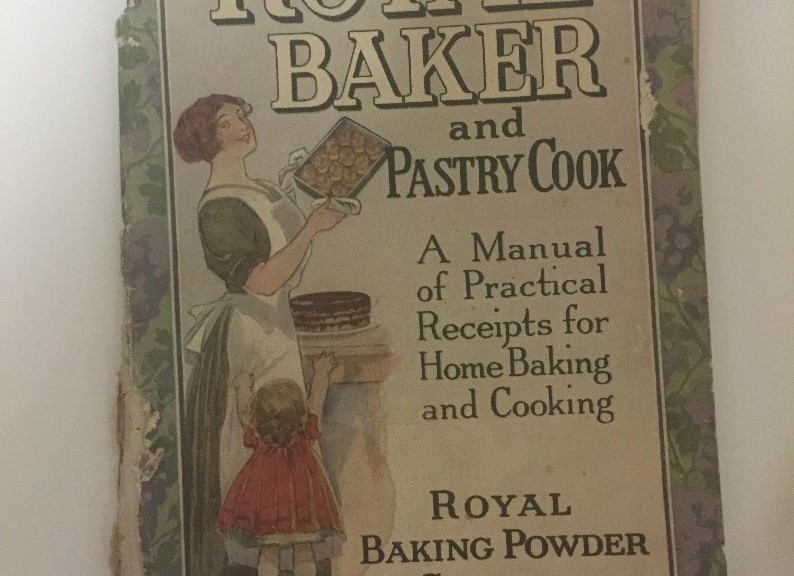When Kate—our fearless Test Kitchen coordinator—assigned me to the Friday, April 15th post, I was very excited. Not because I love the month of April so much, although a couple of my nearest and dearest count it as their birthday month. And not because I love doing my taxes, it’s definitely not that. What I do love is a theme, and Tax Day—although not this year for a very good reason— provides an excellent opportunity for a monetarily themed baked good: financiers.
A financier is a small cake made with almonds. Its distinct name bears testament to the financial market in 19th Century France: financiers were first created in a bakery near the financial center of Paris, where many a financier could visit; the cakes are also a crisp golden color and baked in small rectangular molds (Hesser). So at their heart, financiers are really just edible gold bars, which may be even better than real gold bars, as food resembling precious metals most likely can’t be subject to additional income taxes.
While the origin story of these gilt cakes can be found on websites and is recounted in a 19th Century tome (Mémorial Historique et Géographique de la Patisserie), recipes for it don’t make frequent appearances in cookbooks (Hesser). Some of this may be born from the fact that the recipe is fairly straightforward, mainly involving eggs, butter, flour, and sugar. Haute cuisine (fine food) was very much a part of the French cookbook tradition, dating back to the publication of La Varenne’s Le Cuisinier Francais in 1651 (DeJean, 2005, p.107-109). Or, it could be a recipe known very well to the French, and just little known to Americans. In fact, there was little interaction between French cuisine and North Americans until the mid-to-late 20th Century when Julia Child, Simone Beck, and Louisette Bertholle’s Mastering the Art of French Cooking was first published, bringing French cuisine across the ocean (DeJean, 2005, p.131).
All this is to say, a recipe for financiers proved too elusive for me, and so I substituted in a similar recipe from our collections involving almonds, conveniently titled “Almond Cake” and found in Royal Baker and Pastry Cook published by Royal Baking Powder Company. There are only two notable differences between the almond cake selected and financiers: baking powder and brandy, which I didn’t have anyway, and so I just left it out.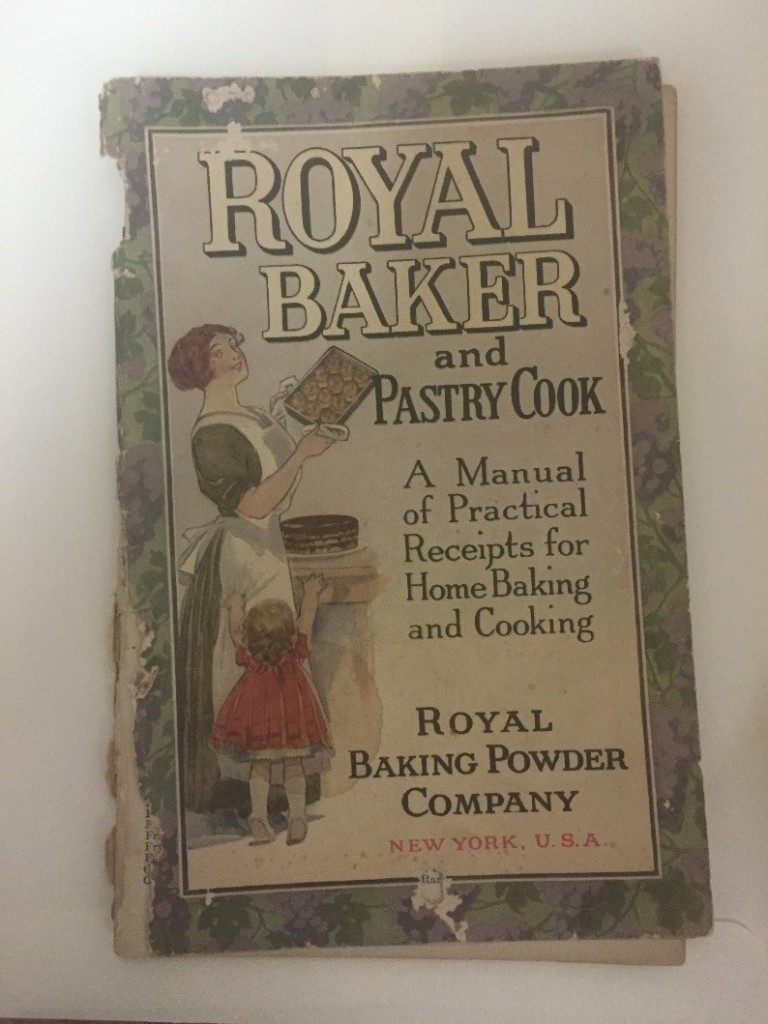
Royal Baking Powder Company was based out of New York and copyrighted its cookbook in 1911. The company took baking powder very seriously, and in its cookbook included such sections as “General Directions,” which “must be carefully read by everyone using this book” (p.1) and “Facts worth knowing” (p.44). These sections pertain to the merits of different types of baking powder. Did you know that there were 3 kinds of baking powder in 1911, with 3 different main ingredients? These ingredients were 1) cream of tartar, 2) phosphate of lime, and 3) alum and alum-phosphate. Royal Baking Powder is made with the “wholesomeness of cream of tartar” (p.1), and the makers advocate using only those baking powders made with cream of tartar.

The recipe I used was appealingly tiny and contained mostly familiar terms. I did learn a new definition for the word “gills.” Not only does it refer to a specific kind of fish tissue, but it is also “a measure for liquids, containing one fourth of a standard pint.” (Gill, n.3). Thankfully, the latter definition is the one referenced in Royal Baking Powder Company’s recipe.

The ingredients in the recipe were all things that might normally be in a kitchen, which meant I made a couple trips to the store. And even though I’m truly enamored with the word “gills,” I did not follow this part of the recipe, instead choosing to grind my pre-sliced almonds with their skin still on. Because Royal Baking Powder so vehemently argued against aluminum based baking powder, I chose one that prominently advertised that it did not contain any:

Whenever I read my colleagues’ Test Kitchen posts, I always envision the labor involved in cooking the food– whether that’s scooping up lard to fry Mexican ravioles or carefully molding meat into a box shape.Some of these activities undoubtedly look exactly the same as they did in the recipes’ heydays. Others feature new technologies and look decidedly different. My own activities fell into the latter category. I chose to use my blender and hand mixer to combine ingredients, both because of time constraints and because my arms just aren’t strong enough to mix in each egg individually, with 3-4 minute intervals for beating. What would’ve taken me 12 minutes to do thus took me 5, and the recipe came together very quickly. Je ne regrette rien.

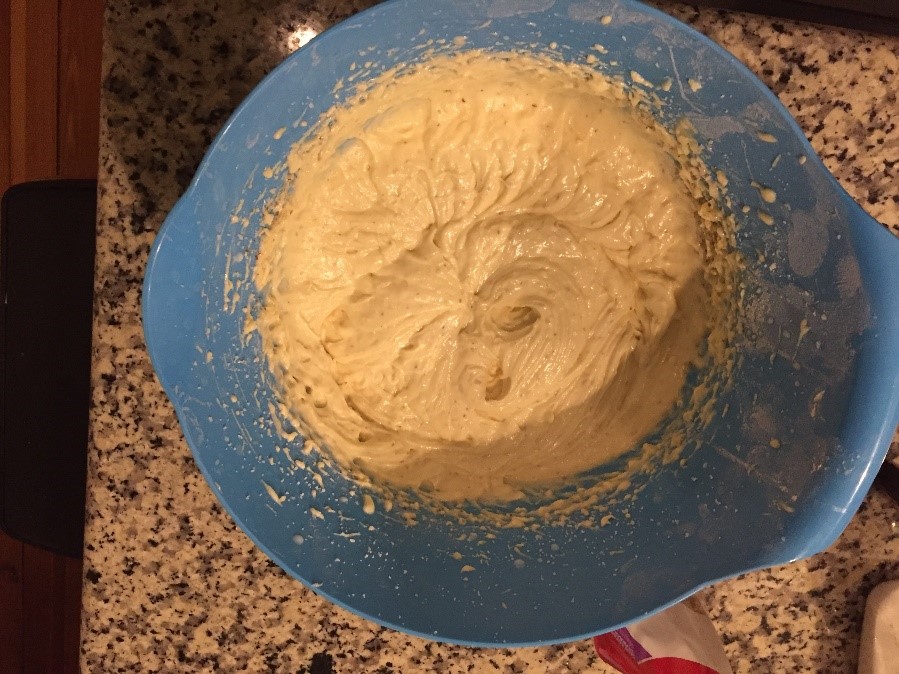 Financiers are most typically baked in individual molds. Royal Baking Powder specifies a fluted pan, which I don’t own. I thus didn’t follow the recommendations for either financiers or the almond cake and baked it in a clear pan. This was probably a mistake, as glass pans do not conduct heat as well as metal ones (Lawandi, J.).
Financiers are most typically baked in individual molds. Royal Baking Powder specifies a fluted pan, which I don’t own. I thus didn’t follow the recommendations for either financiers or the almond cake and baked it in a clear pan. This was probably a mistake, as glass pans do not conduct heat as well as metal ones (Lawandi, J.).
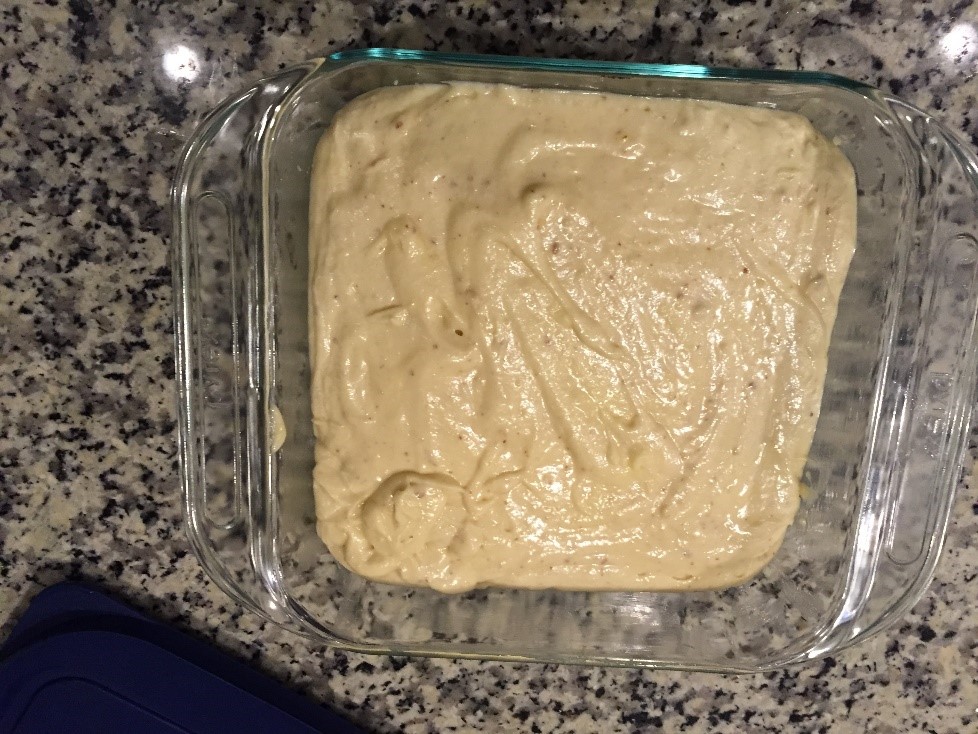
As with other recipes of its time, Royal Baking Powder doesn’t specify a temperature, and so I arbitrarily chose 375 degrees. After checking on the cake at 20 minutes, and then again at 35 minutes, I decided to bump up the heat to 400 degrees. (You may recall that the recommended cooking time was 20 minutes.) Another 10 minutes resulted in a cake that would not poison eaters, and I called that success and took it out of the oven.
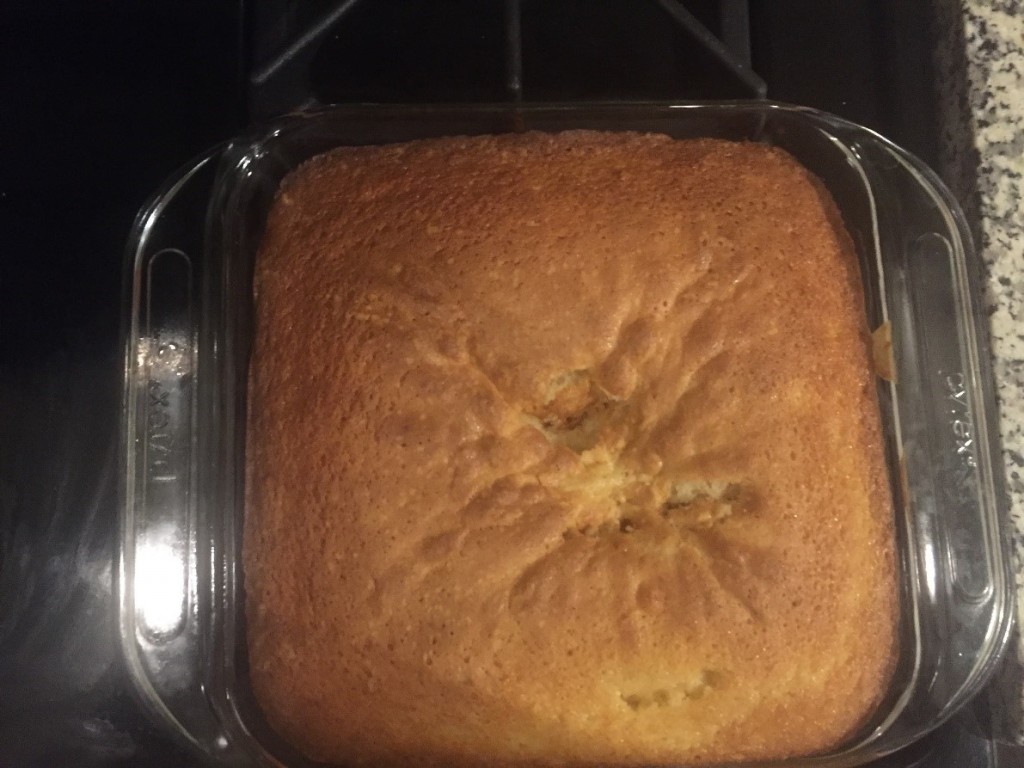
I attempted to give my almond cake a more financial appearance and shaved the cake down into gold bars. The cake was quite crumbly and didn’t quite take to my tender ministrations. I quickly let go of my gold bar dreams (and taking pictures) and just started eating, which was a good thing to do. The cake was much better than expected, and I quickly helped myself to another couple slices. I imagine that it would taste even better with ice cream.
My quest for a financier recipe ultimately reminded me of a library aphorism: let the resources guide your research, meaning that it’s probably not a good idea to choose a topic (or theme) until you look at the resources available to you. If I had paid more attention to that rule of thumb, I might have chosen a slightly more accessible recipe and ended up with a delightful French pastry that more closely followed the instructions.
To be fair, I also ended up learning more about financiers, French cuisine, and baking powder than I ever dreamed of, and those are things certainly worth knowing. Just as importantly, I ended up with a delicious dessert to get me to the weekend.
Works Cited
DeJean, J. E. (2005). The Essence of Style: How the French Invented High Fashion, Fine Food, Chic Cafés, Style, Sophistication, and Glamour. New York: Free Press.
Gill, n.3. (n.d.). Retrieved April 15, 2016, from http://www.oed.com/view/Entry/78285?rskey=ObQoES
Hesser, A. (1999, November 24). The Pastry Chef’s Rich Little Secret. The New York Times. Retrieved April 12, 2016, from http://www.nytimes.com/1999/11/24/dining/the-pastry-chef-s-rich-little-secret.html
Lawandi, J. (n.d.). When to Use Glass Bakeware and When to Use Metal – We’ve Got Chemistry. Retrieved April 15, 2016, from http://www.thekitchn.com/glass-vs-metal-bakeware-is-there-a-difference-food-science-217961
Royal Baker and Pastry Cook: A Manual of Practical Receipts for Home Baking and Cooking. (1911). New York, U.S.A.: Royal Baking Powder.
Post Contributed by Liz Adams, Special Collections Cataloger


